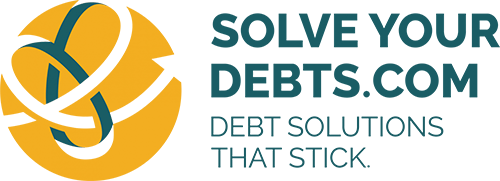How much money is in your savings account? If you answered $3 dollars or something similar – you’re not alone. In fact, a 2019 survey from Refresh Financial found that 49 per cent of Canadians have no money set aside for an emergency, and 53 per cent live paycheque to paycheque.
If there’s anything we’ve learned this year, it’s that having an emergency fund is more important than ever. Not only can savings help us survive in an emergency, it also gives us the money to buy a house, invest in education and life a comfortable retirement lifestyle.
We all know saving is important, but for many, it can seem impossible. When you’re living paycheque to paycheque, you’re barely keeping your head above water. With so many bills to pay, there’s often not much left over for savings.
If you find yourself with no money left over for savings at the end of each month, you’re probably wondering how to save if you don’t have any money.
Start Small and Simple
The answer is to start small and simple. Speak to your financial institution about regular withdrawals that happen automatically on your paydays. This concept is known as “paying yourself first”. When you pay yourself first, the money goes into a separate account before you’ve had a chance to spend it.
Depending on your situation, you could try having as little as $25 per paycheque taken out automatically and put into a savings account. Or maybe you can afford $100 or maybe just $10.
Whatever the amount, make sure it’s not too much or you may need to access it again before next pay day. Sit down and work with your budget to determine how much you can afford to save each month.
Some financial institutions have programs like Scotiabank’s “Bank the Rest,” where they round up to the nearest $1 or $5 on your debit transactions and put the extra in a savings account for you. That’s a relatively easy way to build up savings.
Adjust Your Budget
It is absolutely impossible to save without a budget. Look carefully at your numbers. Focus first on the necessities – shelter, food, clothing (a reasonable amount), healthcare, transit, savings, debt repayments. Find areas to cut back in order to make the budget balance. If you truly do not have enough money to save at the end of the month, you may need to look at ways to supplement your income. We can help you come up with a budget that works for you and your family.
Use cash, not credit
Relying on credit to pay your bills is very dangerous and will simply keep you in a cycle of debt. Try using cash for your purchases each month to ensure you’re only spending what you have. You can use Gail Vaz-Oxlade’s envelope system, where you create envelopes for key areas such as bills, groceries and entertainment. Once you’ve run out of money in, say, the entertainment envelope, you have to go without until your next paycheque.
Open the Right Savings Account
Once you finally find a bit of money to put aside each month, you really should open a high-interest savings account in order to make that money work harder for you. With so accounts available, it can be difficult to know which savings account to choose.
Try to opt for one that makes it difficult to withdraw from. This way, you won’t be tempted to dip into your savings when you’re out buying things. There are some virtual banks where there are no cheques and no debit cards, but you can set up automatic withdraws if you need to access the money. This way you don’t even see the balance in your savings account so you won’t be tempted. Out of sight, out of mind, but it’s there when you need it.
In addition to high-interest savings accounts, there are government registered accounts that offer tax savings as well as the ability to invest. A Registered Retirement Savings Plans (RRSP), for example, offers you money back on your annual tax refund for every dollar you deposit. This is a great way to save for retirement.
A Registered Education Savings Plan (RESP) is a great way to save for children’s education. The Government of Canada will add 20 per cent to each deposit (up to certain limits) you put in, so you immediately earn 20 per cent, plus any interest or growth depending on the investment. This money is specifically for post-secondary education and is withdrawn in the child’s name when the time comes.
Tax Free Savings Accounts (TFSA) allow you to earn interest on your savings without paying tax on the interest. Each person has a limit on how much they can contribute each year, but if you’ve never utilized a TFSA before, you likely have lots of room. Even when you withdraw your money, including the interest, you don’t pay tax on it.
Canada Savings Bonds (CSB) are an investment in your government. The Government of Canada pays interest if you invest in (or buy) a bond. These are most commonly done through payroll deduction at workplaces. The great thing about these is that you do the saving before you even get your paycheque. Often people will do this year-round and then take the money out in December to pay for Christmas.
No matter how you do it – just start somewhere. Check out our money saving tips for more ways to cut your spending. Worried about saving when you’re dealing with debt? Contact Credit Counselling Services of Atlantic Canada. We can help you create a plan to manage your debt and start saving money.






